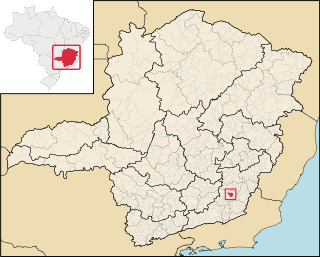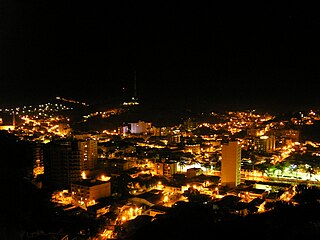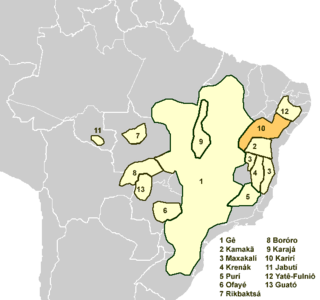
The Paraíba Valley is a landform that encompasses the regions: Paraíba Valley Metropolitan Region and Northern Coast, in the state of São Paulo and Sul-Fluminense Region, in the state of Rio de Janeiro, which stands out for concentrating a considerable portion of the Brazilian economy.
São João, Portuguese for "Saint John", may refer to:

Visconde do Rio Branco is a Brazilian municipality in the state of Minas Gerais. As of 2020 its population is estimated to be 42,965.

Ubá is a municipality located in the Zona da Mata mesoregion of Minas Gerais, Brazil, 290.88 kilometers (180.74 mi) southeast of Belo Horizonte, and 284.31 kilometers (176.66 mi) north of Rio de Janeiro. The estimated population of the city of Ubá was 116,797 in 2020. The current mayor of Ubá is Edson Teixeira Filho.

Leopoldina is a Brazilian municipality in the state of Minas Gerais. It belongs to the Zona da Mata mesoregion and it located 322 kilometers southeast of Belo Horizonte, the state capital. In 2022, its estimated population was 51 145 inhabitants, according to IBGE. Its territory covers an area of 943 km2.
Maxakalí is a Maxakalían language spoken in four villages in Minas Gerais, Brazil, by more than 2,000 people.

The Maxakalían languages were first classified into the Jê languages. It was only in 1931 that Čestmír Loukotka separated them from the Jê family. Alfred Métraux and Curt Nimuendajú considered the Maxakalían family isolated from others. John Alden Mason suggests a connection with the Macro-Jê stock, confirmed by Aryon Rodrigues.

The Mantiqueira Mountains are a mountain range in Southeastern Brazil, with parts in the states of São Paulo, Minas Gerais and Rio de Janeiro.

Muriaé is a municipality in southeast Minas Gerais state, Brazil. It is located in the Zona da Mata region and its population in 2022 (IBGE) was approximately 104,108 inhabitants.

The Puri are an indigenous people of Brazil: the now lost Puri languages are thought to have belonged to the Macro-jê language family.

Rio Pomba is a municipality in the Brazilian state of Minas Gerais founded on 25 December 1767. The population is 17,959 in an area of 252 km2. The municipality is located at a mean elevation of 441 m.
Xakriabá is an extinct or dormant Akuwẽ language formerly spoken in Minas Gerais, Brazil by the Xakriabá people, who today speak Portuguese. The language is known through two short wordlists collected by Augustin Saint-Hilaire and Wilhelm Ludwig von Eschwege.

The Karirí languages, generally considered dialects of a single language, were a group of languages formerly spoken by the Kiriri people of Brazil. It was spoken until the middle of the 20th century; the 4,000 ethnic Kiriri are now monolingual Portuguese speakers, though a few know common phrases and names of medicinal plants.

The Rio Pomba is a river of Minas Gerais and Rio de Janeiro states in southeastern Brazil, one of the principle tributaries of the Paraíba do Sul.

Koropó (Coropó) is an extinct language of eastern Brazil. It has been variously classified as a Maxakalían or a Purian language.

The Paraibuna is a river in Minas Gerais state, Brazil, and a major tributary of the Paraíba do Sul. It flows through the important commercial and industrial city of Juiz de Fora.













